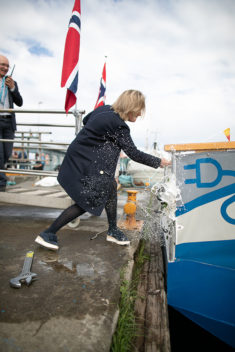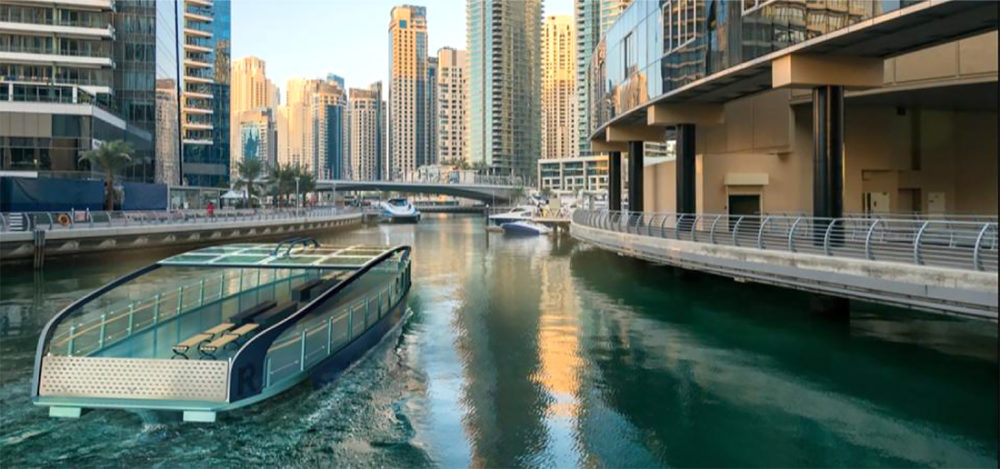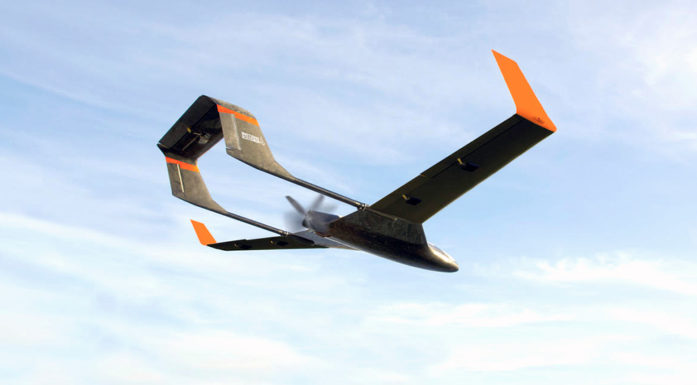Driverless ferries to replace footbridges
Soon the prototype for the world’s first driverless electric passenger ferry will be ready to launch in Trondheim.
As towns grow, the need arises for more river and canal crossings. But bridges are expensive and hinder the flow of boat traffic.
An autonomous and self-propelled passenger ferry that can “see” kayakers and boats, and that shows up right when you need it, could be an ingenious substitute for footbridges.
NTNU’s Departments of Electronic Systems, Engineering Cybernetics and Marine Engineering have borne the main responsibility for the Autoferry project so far. They built and have been testing a prototype of a driverless electric ferry.
Now they plan to refine the ferry’s anti-collision properties and teach it situational awareness.
Improving quality of life for city residents
NTNU has been working with autonomous vessel management systems for years, but training a computer to predict movements and to read complex traffic scenarios at this level of detail is a new development.
“This is a high-technology twist to creating connections across the water. We believe emission-free ferries can help improve urban residents’ quality of life,” says Egil Eide. He is an associate professor at NTNU’s Department of Electronic Systems and in charge of operations for the driverless electric passenger ferry.
Article continues below photo.

Researchers will test the ferry and continue collecting data throughout the coming year. During this time it will be driven with remote control rather than autonomously. Photo: Egil Lund, NTNU
“Driverless ferries can help develop regions that previously haven’t been linked to cities and towns due to a lack of infrastructure, for example,” says Eide.
The plan has the first autonomous electric ferry crossing the Trondheim channel between Ravnkloa and Vestre Kanalhavn. The distance is just under 100 meters, and the crossing takes a mere one minute but will save pedestrians a 10-15 minute walk.
The ferry prototype has been tested in the channel with good results.
The proposed full-scale ferry will be able to take at least 12 passengers, plus bicycles and baby strollers. It will charge its batteries while docking as passengers disembark and board the craft.
Multiple sensors provide safety
Phase one of the Autoferry project was to monitor boat traffic in the canal. In phase two, a half-scale ferry (five metres) was built, and the propulsion systems, batteries and charging systems were tested. Researchers are also working on developing navigation systems and automatic docking, as well as testing anti-collision sensors.
Article continues below photo.

On 18 June, the ferry was christened MilliAmpere by Ingrid Schjølberg, Director of NTNU Oceans. Photo: Kai Dragland, NTNU
The phase three launch is imminent and will involve putting the full-scale ferry into action and fine-tuning the technology.
“We’re using four different sensors: radar, an infrared camera, an optical camera and LIDAR (Light Detection And Ranging – optical laser measurement). This will be a robust system of sensors that complement each other and provide a good overview,” says Edmund Brekke, associate professor at NTNU’s Department of Engineering Cybernetics.
Sensors on land too
“One of the challenges of the project is th at all these systems need to work well together. We also want to have sensors on land that can monitor blind zones,” adds department head Morten Breivik, who is directing the Autoferry project.
The Autoferry project – autonomous all-electric passenger ferries for urban water transport – involves expertise from various disciplines. The project has now received funding for six PhD positions and is in the process of hiring candidates for these posts. About thirteen master’s students are already part of the project, as well as 19 NTNU researchers who are connected to Autoferry as supervisors.
As easy as taking the elevator
The project is managed from Trondheim, where the ferry prototype is located, but NTNU in Ålesund and NTNU in Gjøvik are also involved.
Providing a good user experience is one aspect that the researchers will focus on now in the final part of phase two, as well as in phase three. The driverless ferry will be on-demand and user-controlled by users pressing a call button. Passengers have to experience using an autonomous ferry as being just as safe and easy as taking the elevator.
Cyber security is another aspect of the project– researchers need to eliminate the possibility of the ferry being hacked.
Can the ferries revitalize small island communities?
Several other countries have clearly expressed their desire for driverless ferries.
In cities, the autonomous ferries could connect to a city’s existing transport systems and offer an eagerly anticipated emissions-free alternative form of transport.
Article continues below photo.

One vision of what the next generation of driverless ferries may look like. Illustration: Reaktor (Finland) www.reaktor.com
The researchers also want the ferry technology to be scalable so that it can be used over longer distances and be useful in more rural areas. Running staffed ferries is expensive. Perhaps driverless ferries could revitalize small island communities?
Several Norwegian communities have announced their interest in the autonomous ferries, including the municipalities of Ballstad in Lofoten, Sandefjord, Drammen and Tønsberg. The University of South-Eastern Norway is working on creating a driverless ferry for use in Tønsberg, but NTNU is currently leading the race.
Useful for community planners
“NTNU has a large research environment and also maintains close contact with the relevant industrial expertise in Trøndelag county, which enables us to implement products faster than many other research locations,” says Eide.
“We believe that an industry will evolve from this project. The driverless ferries can become a new tool in community planners’ toolboxes, “ he says.
And, he adds, “if we succeed with everything we’ve set out to do, then there’s no doubt the market is there.”
The researchers point out that autonomous ferries are a dynamic solution that can be adapted to people’s user patterns. The world’s first autonomous passenger ferry may be in use as soon as sometime next year. This brand new NTNU technology, in the heart of Trondheim, could be the launching point for many more water-based public transport systems around the world.
Collaborating partners:
Norwegian Maritime Authority, Trondheim Port Authority, Trondheim municipality, Maritime Robotics, DNV GL, Seatex
You can read more about the driverless ferry project at: www.ntnu.edu/autoferry




